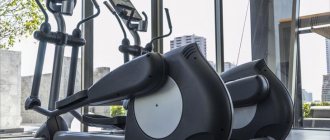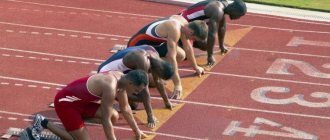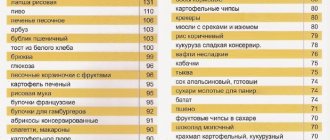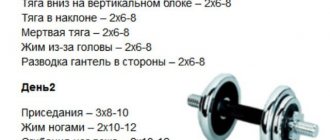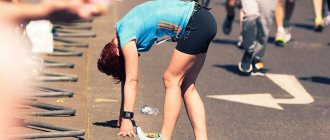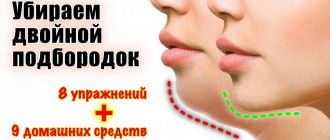To measure the pulse on the radial artery, use 2-4 fingers of the other hand to press points near the base of the thumb and count the beats for 1 minute. If it is difficult to find the pulsation in the arm, then for measurement they find the carotid artery on the side of the Adam's apple. For hardware determination, automatic, semi-automatic, and pulse oximeter tonometers are used.
Athletes can use a simplified method - counting in 10 seconds and multiplying by 6, fitness bracelets, trackers. An accelerated pulse (from 90 beats) occurs during physical activity, stress, heart disease, and hormonal disorders.
Slow (below 60) is characteristic of poisoning, brain diseases, and is normally found in well-trained athletes. Weak pulsation occurs with inflammation and atherosclerotic damage to the arteries. If there is no pulse in the carotid artery, then urgent resuscitation is needed, as this means cardiac arrest.
How to measure pulse: available methods at home
You can measure your pulse at home manually - determine the pulsation point of an artery (most often the carpal or carotid), then count the beats per minute. There are also mechanical measurement options; the features of the most common methods are indicated in the table.
| What is measured | Advantages | Flaws |
| Palpation (palpation) | No equipment needed, can be calculated at any time | You need a watch with a second hand, it’s not always possible to catch a weak wave |
| Tonometer semi-automatic, automatic | Immediately shows pressure and pulse, can be saved in memory and compared | Not suitable for patients with complex arrhythmias |
| Pulse oximeter | Blood oxygen saturation and pulse are measured, accurate results | Purchasing is advisable only in case of heart and pulmonary failure, blood diseases |
| Fitness gadgets: bracelet, tracker | Measurements take place throughout the day, showing the intensity of exercise and calories burned | Not all models are distinguished by measurement accuracy, especially in case of heart rhythm disturbances |
| Apple Watch | Many functions, quick measurement, convenient for training | |
| Fitness headphones | You can listen to music during class at the same time |
Heart rate measurement in various conditions
To measure your heart rate during training and at rest, it is important to take into account different rules: during exercise you need to stop, take 2-3 breathing cycles and then count the beats.
If the patient needs to know the heart rate at rest, it is better to sit on a chair, relax and count the pulse fluctuations after 10 minutes of rest. In the first case, you can count the pulse in 10 seconds and multiply by 6, and in the second, it is recommended to measure exactly 1 minute.
Pulse counting time in seconds
The heart rate is always determined in 60 seconds, but during sports activities, to speed up measurements, it is counted in 10 or 15 seconds and then multiplied by six or four. It is best to count the pulse on your hand per minute, since this option will give the most accurate result . For diseases of the heart and blood vessels, under any conditions, minute measurements are recommended, because short intervals may show unequal results.
Where is the pulse, what points to look for on the body
The pulse is determined in the arteries whose pulsation points are closest to the surface of the body. For patients with vascular diseases of the extremities, the best option is the carotid artery; it is also used in severe condition, low blood pressure and weak pulse filling. To do this, you need to feel your Adam’s apple, then move your index and middle fingers a little to the side (1-2 cm) until you feel a distinct pulsation.
The second artery, which in most cases is used to determine the pulse, is the radial artery. The measurement point is located at a distance of 2-3 cm from the base of the thumb along the inner surface of the wrist joint. If it is necessary to study the condition of the vessels of the lower extremities, measurements are taken on the legs:
- femoral artery - in the inguinal triangle near the inguinal fold;
- popliteal - along the back of the thigh near the knee joint;
- dorsum of the foot - between the metatarsal bones near the ankle joint;
- tibial - along the inner surface of the ankle.
In case of injury or vascular diseases, the doctor must check the pulse at 2-3 points along the large arteries supplying the damaged area.
How to find your pulse
To feel the pulse, you need to lightly press the skin at the selected point with two or three half-bent fingers. If the pulsation is felt weakly, then you can increase the pressure a little, but if the pressure is strong, the measurements will be incorrect and discomfort will occur. If it is difficult to find a point on the wrist, then the pulse can almost always be determined on the carotid artery.
What they measure: home appliances and gadgets for athletes
The most popular home device for measuring pulse is a tonometer with automatic display of heart rate and blood pressure. Depending on the model, the cuff is located on the shoulder or wrist joint, so measurements are taken on the brachial or radial artery. Important conditions for correct determination:
- comfortable position with back support;
- cuff at heart level;
- after 10-15 minutes of rest;
- an hour after eating, drinking coffee, strong tea, taking a hot bath, smoking.
Measurements with a pulse oximeter at home are quite rare, since its main purpose is to determine blood oxygen saturation. The device's sensor looks like a clothespin attached to your finger or earlobe. Models for newborns can be made in the form of booties.
The indicators are displayed on the screen, there is a sound alert function for critical oxygen levels and an excessively rapid pulse. A pulse oximeter is needed for oxygen deprivation of organs for patients with diseases of the heart, lungs, blood, brain, and sleep apnea syndrome (breathing stops during sleep).
Pulse oximeter
All other fitness gadgets are not classified as medical products, so they are best used by relatively healthy people and athletes. They differ only in the set of additional functions:
- distance traveled;
- calories burned;
- determining the intensity of physical activity;
- control over sleep levels;
- the ability to listen to music during class (headphones with a heart rate measurement function).
Watch this video from Dr. Komarovsky about when you should buy a pulse oximeter and how to use it:
Normal indicators
In adults, normal heart rate ranges from 60 to 80 beats per minute. When the frequency is less than 60, this phenomenon is called bradycardia, more than 80 – tachycardia. The normal heart rate by age is shown below.
At rest, the indicator will differ depending on the following factors:
- age;
- person's gender;
- fitness;
- body sizes.
In newborn children, this indicator most often ranges from 120 to 140 beats per minute. A premature baby has a higher value - from 140 to 160. By one year it decreases and reaches 110-120, at five years - up to 100, at ten - up to 90, at thirteen - up to 80. The normal heart rate by age will help you understand this .
Why is heart rate measured?
Heart rate (HR) is measured to determine the work of the heart muscle, this is important for diagnosis:
- tachycardia (beats per minute from 90 per minute) - can be physiological (without disease) during physical and emotional stress and with heart disease;
- bradycardia (pulse up to 60) – normally appears in well-trained athletes, but is more often found with pathology of the heart muscle.
Medications, caffeine, alcohol, and smoking affect heart rate. There are also congenital diseases that occur with an accelerated or slowed pulse.
Norm in indicators
Normally, heart rate indicators depend on age (see table).
| Age | Heart rate interval (beats per minute) | Averages |
| 1-3 years | 95-170 | 140 |
| 4-6 years | 85-130 | 105 |
| 6-12 years | 85-120 | 90 |
| 12-18 years old | 75-110 | 95 |
| 18-50 years old | 60-90 | 70 |
| 50-75 years | 65-95 | 75 |
What allows you to set the measurement
Pulse rate measurement allows you to determine the severity of diseases:
- tachycardia – heart failure, angina pectoris, myocarditis, defect, non-cardiac pathological conditions: excess of thyroid hormones, adrenal glands, anemia, attack of pain, temperature;
- bradycardia - heart attack and its complications, weakness of the heart muscle, non-cardiac causes: poisoning, renal failure, typhoid fever, brain contusion, inflammation of the meninges (meningitis).
How to correctly record the result
Measurement results should be correctly recorded in the form of shock indicators per minute. If pulse rate is monitored, the measurement time is also indicated. For example, the entry might look like this:
- 8-00: Heart rate 82 beats/min;
- 12-00: Heart rate 78 beats/min.
Which option is the most accurate?
The most accurate option for measuring heart rate is an electrocardiogram; only it can show the true rate of contraction of the ventricles of the heart. This is especially important for rhythm disturbances. In patients with complex forms of arrhythmia, it is impossible to correctly calculate pulse beats, since not all waves of contractions reach the peripheral arteries (a symptom of pulse deficiency).
If the pulse is rhythmic and well-filled, then counting beats per minute gives a fairly accurate result. When using hardware methods, reliable measurements can only be obtained using medical devices (tonometers, pulse oximeters). All other gadgets are suitable for monitoring heart function during sports.
What is the difference between heart rate and pulse?
Most people think they are the same thing. But it is not so. Heart rate reflects the number of contractions made by the heart, and specifically by the ventricles (lower sections), in one minute. Pulse rate, or pulse, is the number of arterial dilations during the heart's ejection of blood, also in one minute. As blood flows through the vessels during heart contractions, it creates a bulge in the arteries that can be identified by touch. Heart rate and pulse may be equal, but this is typical only for a healthy person. For example, with rhythmic disturbances, the heart begins to contract erratically. When it contracts twice in a row, the left ventricle does not have time to fill with blood. The second contraction, therefore, occurs with an empty ventricle, and blood is not ejected from it into the peripheral vessels and into the aorta. In this regard, a pulse will not be felt in the arteries, although cardiac contraction occurs. During atrial fibrillation and a number of other pathologies, a discrepancy between the pulse rate and heart rate is observed. This phenomenon is called pulse deficiency. In such cases, it becomes impossible to determine heart rate through pulse measurements. This can only be done by listening to heartbeats, for example, using a phonendoscope. It is important to know how to measure heart rate correctly.
How to measure the pulse on your hand yourself
To independently measure your pulse on your arm you need:
- Unbutton or remove clothing that is constricting your left arm.
- Take a comfortable position in a chair or at a table (the left hand and forearm should have support, be closer to the heart, palm facing up).
- With the fingers of your right hand, grasp the wrist joint of your left so that the index, middle and ring fingers are on top, and the thumb is on the bottom.
- A pulsation will be felt under three fingers closer to the base of the palm and thumb of the left hand.
- Turn on the stopwatch and count the beats for 1 minute.
Watch this video on how to correctly measure your own pulse:
On which hand?
It makes no difference which hand you use to measure your pulse. In most people it is completely identical on both upper limbs. If there are differences in filling or frequency, this may be a sign of severe vascular disease:
- atherosclerotic changes in arteries;
- aneurysm (protrusion of the wall) of the aorta;
- aortic pathologies – narrowing above the valve, coarctation;
- arteritis (inflammation of the artery) Takayasu (pulselessness disease).
Method of assessing pulse for an adult
When studying the pulse of an adult, it is necessary to adhere to the method of sequential determination of characteristics:
- frequency (counting per minute);
- rhythmicity (the number of beats for every 10 seconds should be equal);
- filling (the pulse wave is clearly noticeable on the wrist);
- tension (reflects arterial tone);
- uniformity - all blows are of the same force.
If it's hard to find on your wrist
If it is difficult to find a pulse in the wrist, this is a sign of heart failure, low blood pressure, or narrowing of the arteries of the upper extremities. In this case, it is recommended to count the number of heartbeats in the neck (on the carotid artery) or on the chest under the left mammary gland.
How to calculate heartbeat and pulse manually without a heart rate monitor
You can count the pulse manually (without a heart rate monitor) on the wrist or carotid artery by palpation, that is, count the beats at the pulsation point, but to directly measure the heartbeat you need to find the apex beat. To do this you should:
- Lie down on the bed.
- Place the palm of your right hand under the left breast in women or under the left nipple in men.
- Find the place of the clearest heart beats.
- Start the stopwatch for 1 minute.
- Count all the beats of the apex of the heart.
Location of the apex beat
It is not always possible to easily measure the heartbeat by palpation in the left half of the chest. This is easier to do in people with a thin build or with increased force of contractions of the left ventricle (hypertension, heart disease). You can determine the heart rate much more accurately by listening to the heart with a phonendoscope.
Basic concepts about heart beats
Heart rate is a physiological characteristic that reflects the normal rhythm of the heart, widely used in both the medical field and professional sports. Heart rate is determined by a number of many factors and can fluctuate significantly due to various reasons, but it is important that these indicators do not exceed established limits. A decrease or increase in the heart rate in a pathological form often leads to aggravation of diseases of the endocrine, nervous and cardiovascular systems, and can also cause serious health consequences.
How to measure your pulse in 10 seconds
To measure your pulse in 10 seconds, you need:
- Feel the pulse on the radial artery of the arm or carotid artery (on either side).
- Start the stopwatch for 10 seconds.
- Start counting from the first beat until the signal.
The result obtained must be multiplied by 6. This method is not suitable for determining the pulse rate in diseases, because the measurement error can be from 10 to 16 beats per minute. Athletes use this technique to find out whether the selected load corresponds to the training interval.
Correct technique
The plank is a very effective exercise. He is underestimated by a lot of athletes. In appearance, it is a very easy exercise that is not capable of putting a lot of stress on your body. However, it is not. When performing the exercise, you engage the following muscle groups:
- Rectus and oblique abdominal muscles.
- Serratus muscles.
- Small of the back.
- Lat.
- Legs.
- Deltas.
Technique for performing the plank exercise:
- Take a lying position, as in push-ups.
- From this position, rest your forearms on the floor.
- Keep your back straight, do not lift your buttocks up.
- Look down.
- Your body should be in a straight line.
- Stay in this position until you collapse to the floor.
Now let's figure out exactly how your muscles tense.
For the first 10-20 seconds it seems to you that this is the easiest exercise in your life. Your muscles hardly tense up.
After 30 seconds of standing in a plank, you begin to feel a burning sensation in your lower abs. Your arms begin to tense slightly, it seems that you can’t stand any longer. However, this is not the case. Too often people underestimate their physical capabilities. This is what prevents them from progressing faster in sports.
After 40-50 seconds , you feel your entire abs starting to burn. Before this, only the lower part worked for you, but now the upper part is also included in the work. A slight burning sensation also appears in the lumbar muscles. But this is not the most difficult thing. the deltoids are the most stressed.
After a minute and a half of standing in this position, your lower back and abdominal muscles are burning, your arms are shaking, and you feel like you are about to collapse on the floor. The legs are also actively involved in the work, and such a wave of muscle tension passes throughout the body. After some more time, you can lower yourself to the floor.
Few people who do planks can hold out until their lats start to burn. You feel a burning sensation throughout your body. And then the lats begin to burn. They receive a static load from the very beginning of the exercise. They just need more time to properly load up.
This is the approximate time to complete the exercise for the average person. If a person is naturally weak, then he will not stand for 30 seconds. And if a person constantly trains, and his body is already accustomed to such loads, he begins to feel a burning sensation only after 2-3 minutes of holding the bar.
This was a classic version of the plank. Besides him, there are others:
- Side.
- With legs elevated.
- With arms raised.
- With an outstretched leg or arm.
- Place one hand or foot on the floor.
The side option is designed for high-quality work on the oblique abdominal muscles. Technique for its implementation:
- Place your elbow on one side of your body on the floor.
- Place the outer part of your foot on the same side as well on the floor.
- Your legs and torso should not be bent: your body should also describe a straight line.
- You need to stand in this position until you fall. After which, you can change sides.
Here you can hold out for much less time . This is understandable, because you are supporting only one part of your body, and you are holding the same weight.
The plank with your legs elevated shifts the load slightly. If you place your legs, for example, on a sofa, then the deltoids, as well as the lower part of your abs, will be more actively involved in the load.
As your arms rise, the load correspondingly shifts to the upper part of your abs. Only this version of the plank is lightweight. A novice athlete will be able to hold out for more than three minutes.
When performed with extended arms or legs, you significantly increase the load on your body. This should be done when the classic version of the plank becomes too easy for you. Remember, training should be hard. And only then will you achieve the desired result.
How to measure pulse in the neck correctly
To correctly measure your neck pulse, it is important to consider:
- the patient's position is only sitting or lying down;
- the pressure should be light, since with strong pressure the heart rate slows down, in sensitive patients there is a risk of cardiac arrest;
- if it is necessary to determine the heart rate on both sides, you should alternately count the pulse on the right and left; while simultaneously pressing on the projection points of the carotid arteries, dizziness and lightheadedness may occur;
- before starting the stopwatch, you need to find the pulsation point with two fingers on the side of the thyroid cartilage (Adam's apple);
- repeated measurements are carried out at intervals of 5-7 minutes to restore the heart rate.
If you can't measure your pulse
If the pulse on the carotid artery cannot be measured, then this is a sign of death. The patient requires urgent resuscitation measures to save his life. The assumption of cardiac arrest is confirmed by the following signs:
- pale or bluish skin,
- lack of consciousness
- cessation of breathing.
Indirect cardiac massage during cardiac arrest
In this case, it is necessary to provide first aid:
- Free your chest from clothing and loosen your belt.
- Strike the center of the sternum with your fist.
- Check the pulse in the carotid artery; if it is not there, then begin chest compressions with a frequency of 60-70 compressions per minute, the sternum should drop down 3-4 cm.
We recommend reading about what causes low heart rate and high blood pressure. From the article you will learn what is the normal pulse rate for hypertensive patients, what diseases lead to low pulse and high blood pressure, what can be done at home, and correction of the condition with medications.
And here is more information about what your heart rate should be to burn fat.
You can measure the pulse on the radial and carotid arteries by counting beats in 1 minute. The most accurate method, especially for arrhythmia, is an ECG; a tonometer, pulse oximeter, and fitness bracelet can help in determining heart rate.
Tachycardia
This type of arrhythmia is characterized by rapid heartbeat. Tachycardia has two types:
- sinus, which occurs due to excessive activity of the SA node, which sends electrical impulses that cause the heart to contract;
- paroxysmal or ectopic - appears when impulses originate not from the SA node, but from the ventricles or atria.
Paroxysmal tachycardia, depending on the source of the impulse, can be ventricular and supraventricular. If the arrhythmia is supraventricular, then the heart muscle begins to contract in the atria, that is, above the ventricles. Tachycardias of this type have the following varieties:
- physiological – increased heart rate during physical activity (this is normal and does not require treatment);
- reciprocal, when the circular passage of the contractile impulse occurs at an accelerated rate;
- focal - the contractile impulse does not come from the sinus node, but from a stronger source;
- fibrillation and flutter - strong and erratic contraction of the atria.
With gastric tachycardia, the contractile impulse occurs in the ventricles. This type is often more dangerous. The following types exist:
- extrasystoles - an extraordinary contraction of greater force than usual, when repeated several times leads to tachycardia, although in itself it does not pose a threat;
- long QT syndrome - detection is possible only through an electrocardiogram (if the indicator is high, various types of arrhythmias develop);
- fluttering and fibrillation of the ventricles - a strong and chaotic contraction.
In general, tachycardia has such main symptoms as strong and rapid heartbeat, general weakness and difficulty breathing.
In order to determine it, you need to know how to calculate heart rate from an ECG.

